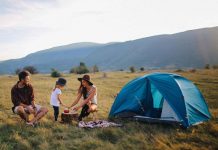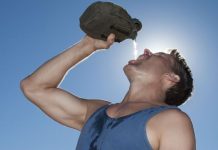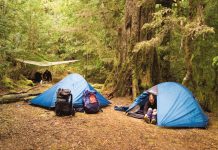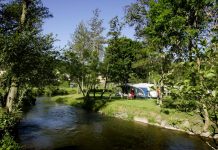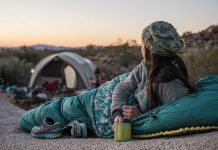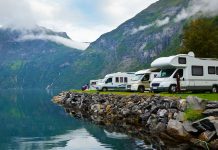Contrary to popular opinion, the desert is a wondrous landscape filled with flora and fauna. It is, however, a delicate ecosystem with unforgiving weather. While desert camping can be a remarkable experience, some preparation is needed to prevent harm to both the camper and the environment. Here are a few sage suggestions:
Respect the Sun
Protection from the sun is critical for a successful desert camping experience. A broad-brimmed hat to shade the face, sunglasses and heavy-duty sunscreen are essential. Although it seems counter-intuitive, long sleeves and full-length pants provide added protection. Because cotton holds moisture, it is an excellent choice for desert wear. In the hottest part of the day, find some shade and rest. Leave hiking and other strenuous activity to the cooler morning and evening hours.
Bring Copious Amounts of Water
Humidity in the desert is extremely low, so dehydration is a real possibility. Count on at least two liters of water per person per day. A gallon per person is even better. It is a good idea to also bring chlorine or iodine tablets to purify water if the supply runs dry. Never leave the campsite without some water at hand.
Prepared Food is Best
With much of the country in drought conditions, building a fire in the desert can be a disaster. It’s best to bring ready-to-eat items like freeze dried food, nuts, jerky and other lightweight foods that don’t require cooking.
Evenings are Chilly
Many novice desert campers are surprised that the nights are so cool. Be sure to bring extra clothing and some blankets.Use a spacious backpack to carry your camping items.
Pack it In, Pack it Out
Everything brought into the desert should be taken back out upon leaving. This includes all litter, food scraps, and even used bathroom tissue. Human waste should be buried 6-8 inches deep. Leave no trace that anyone was there. This includes leaving everything in the desert where it belongs. Rocks, plants or artifacts need to stay put.
Stay Off the Crust
Some desert areas contain a crusty soil. This cryptobiotic soil is made of dormant lichens, algae and other living organisms. It stores water and nutrients that are critical to other plants. Avoid disturbing this valuable component of the desert ecosystem.
Desert camping can be an awe-inspiring experience. Bring plenty of water, some freeze dried food or other lightweight sustenance, a good pocket knife and a camera. Remember that everything needed for a successful experience must be brought along.


